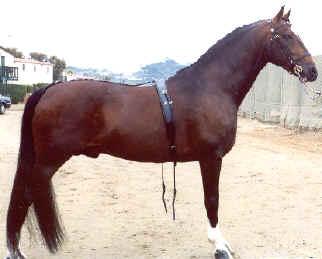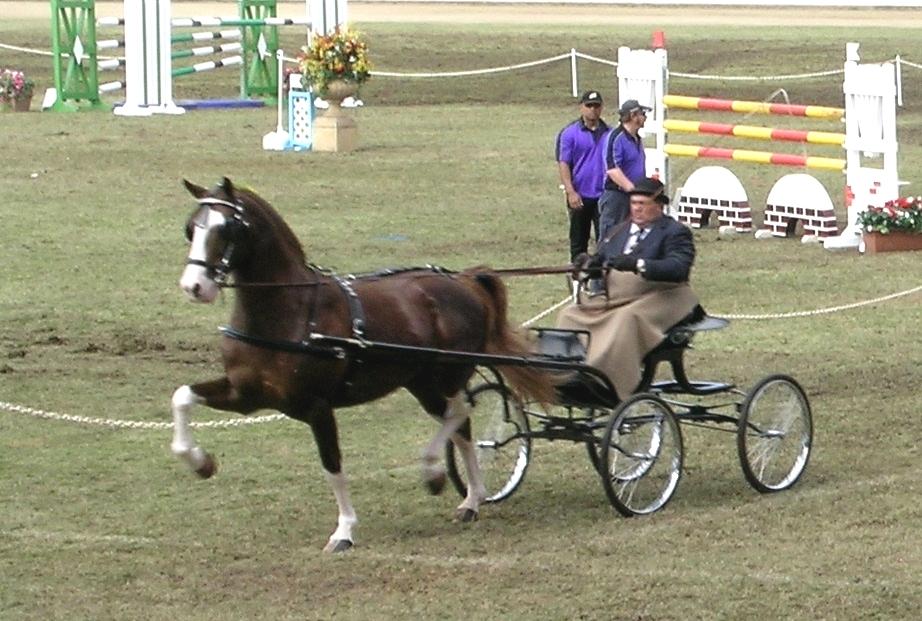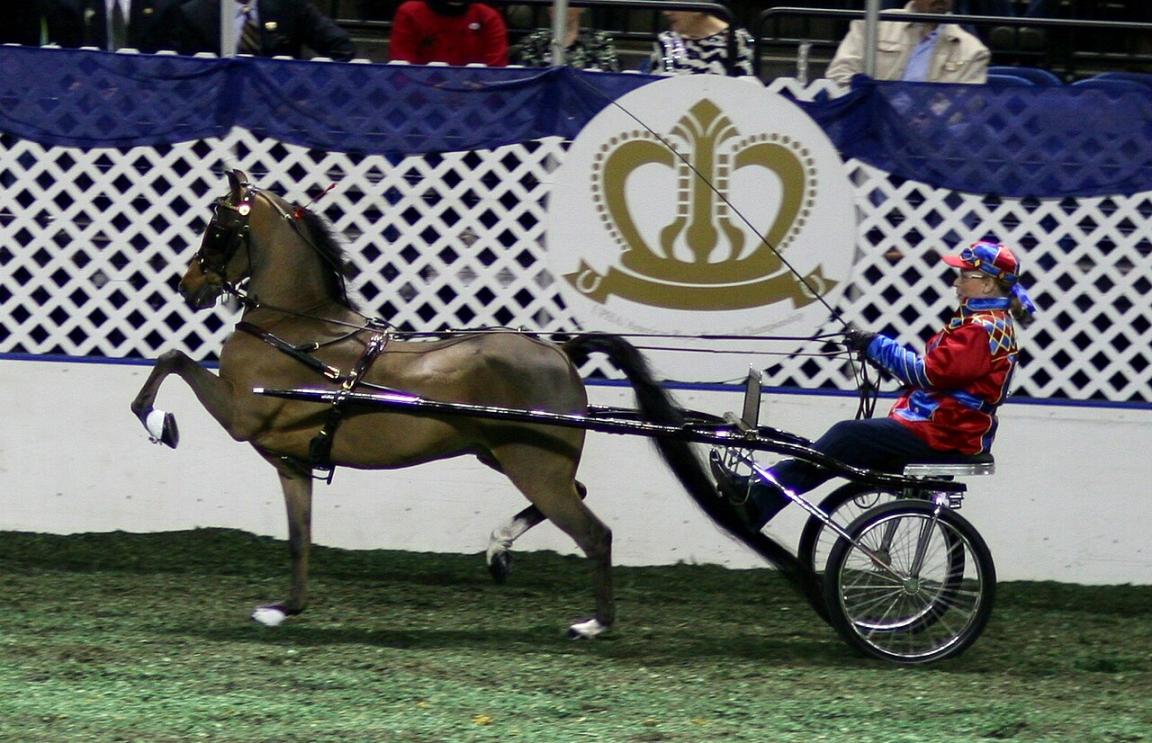
Continent: Europe
Country: United Kingdom
Weight: 450 – 550 kg
Height: 150 – 165 cm


The Hackney is a horse breed originating from the United Kingdom, more specifically from the regions of Norfolk and Yorkshire in eastern England. It takes its name from the London district of Hackney, historically associated with hire carriages pulled by trotting horses.
The breed began to develop as early as the 14th century, under the influence of English kings who sought hardy, elegant horses capable of trotting for long periods over rough roads. Its roots lie in the Norfolk Trotter, the Yorkshire Coach Horse, and Arabian bloodlines such as the Darley Arabian, one of the founding sires of the Thoroughbred.
The historical cradle of the Hackney is located in eastern England, notably in the regions of Norfolk, Yorkshire, and around London, from which it takes its name. It is in these areas that its qualities as an elegant and enduring trotter were developed as early as the Middle Ages.
With the rise of the stud-book starting in 1883 and the massive exports at the end of the 19th century, Hackney breeding spread to several countries:
– United Kingdom (Norfolk, Yorkshire, Midlands)
– United States (notably Kentucky, home of the American Hackney Horse Society)
– Canada (Ontario)
– Netherlands (notably with the Dutch Hackney Studbook – NHS)
– Argentina, Australia, New Zealand, South Africa
Today, the Hackney is still bred in these countries, often by enthusiasts or for driving competitions. The De Heemhoeve Stud in the Netherlands illustrates this ongoing international breeding, while remaining connected to the parent British stud-book.
The Hackney has significant genetic value, notably thanks to its spectacular trot, proud carriage, and great endurance. It has been used as an improving breed to bring energy, elegance, and expressiveness of gaits to other sport horse or show horse breeds.
Its bloodlines were sought after for crossing with ponies to create the Hackney Pony, now recognized as a separate breed.
Moreover, the Hackney descends from prestigious lineages including the famous Darley Arabian, which indirectly links it to the Thoroughbred. This heritage gives it a highly valued genetic legacy, particularly for breeding lively, enduring trotters suited to light or sport driving.
Medieval Origins:
The roots of the Hackney go back to the 14th century, in eastern England, particularly Norfolk. English monarchs sought powerful, enduring, and fast-trotting horses, able to be ridden on rough, undeveloped roads.
Growth under Henry VIII:
In the 16th century, King Henry VIII required wealthy landowners to keep a certain number of trotting stallions to improve the quality of horses in the kingdom. The term hackney was already in use, referring to hire horses that pulled carriages in London.
Birth of the Norfolk Roadster:
Around 1729, crossing a Norfolk Trotter with an Arabian stallion produced the Norfolk Roadster, the direct ancestor of the modern Hackney a strong, fast, and enduring horse. Three stallions had a lasting influence on the breed: Original Shales (1755), descendant of the Darley Arabian, as well as Gold Farmer and Fox Hunter, sons of the famous Sampson.
Influence of British Trotters:
In the 19th century, the Hackney was shaped by two British trotting breeds: the Norfolk Trotter and the Yorkshire Coach Horse, renowned for their endurance and elegance in harness. Mounted and harness trotting competitions were hugely popular, until the advent of the railway reduced the need for long-distance travel.
Foundation of the Stud-Book:
In 1883, breeders founded the Hackney Horse Society in Norwich and opened an official stud-book. Two years later, in 1885, the breed was presented to the public for the first time at the Agricultural Hall in London, marking the start of its golden age.
The Golden Age and Exportation:
Between 1885 and 1920, the Hackney became a favorite carriage horse for high society and lovers of elegant horses. It was exported massively to the United States, Italy, France, Germany, Netherlands, and Japan. This period also saw the creation of the Hackney Pony, bred for show driving.
Decline in the 20th Century:
The early 20th century brought a gradual decline due to motorization. World War I accelerated this trend, and many breeders abandoned the Hackney. However, its spectacular gaits and presence kept it in driving competitions.
Post-War and Adaptation:
After World War II, driving became a sporting leisure activity. Docking was banned in 1948, but the breed kept its admirers, seduced by its high-stepping and expressive trot. Today, though listed as "endangered", the Hackney is still bred in the UK and internationally, thanks to a network of passionate breeders.
The Hackney is known for its lively and energetic temperament. It is a spirited horse, with a high head carriage and a proud attitude, always showing its natural forwardness.
Highly enduring, it can trot at a good pace for long periods without tiring, contributing to its historic reputation in the driving world.
Its great reactivity and fiery character make it an exceptional partner for experienced drivers, but it is not suited for beginners. When well-trained, it is willing, expressive, and spectacular, especially in show competitions.
In hand or in harness, the Hackney exudes nobility and dynamism, enhanced by its bright eyes and high-stepping action.
"An elegant and enduring horse, the Hackney is lively, proud, and energetic, ideal for driving but demanding for its handler."
The Hackney faces significant challenges, notably due to the decline in the global use of driving horses and competition from modern sport breeds. Its status is currently listed as "endangered" by the FAO, due to the low number of annual births.
However, several factors allow for an optimistic outlook, particularly in specialized circles:
– The niche of show driving remains highly active, especially in the United States, Netherlands, and Great Britain, where the Hackney’s spectacular style is still prized.
– The Hackney Pony, derived from the breed, enjoys greater popularity, indirectly helping to preserve the genetic heritage.
– Dedicated breeders, often family-based or traditional, actively work to preserve the purity of the breed through national stud-books.
– The Hackney retains potential as an improving breed, particularly for passing on the elegance of the trot and proud bearing.
The breed’s future rests on a targeted promotion strategy: highlighting it in equestrian shows, supporting conservation programs, and fostering international collaborations between stud-books to maintain genetic diversity.
The Hackney is generally a robust and hardy breed, selected for centuries for its endurance and physical strength. Its short, strong limbs and good feet give it excellent driving performance over time.
However, like other high-stepping breeds, it may be prone to:
– Joint stiffness or tension if training is unsuitable or excessive
– Tendon issues due to repeated strain on the forelimbs
– Premature joint wear in horses used intensively in show driving
No major genetic predispositions are recorded in the stud-book, but maintaining sufficient genetic diversity is essential, as the breed is listed as "endangered".
Regular veterinary care, gradual training, and proper hoof maintenance are recommended to preserve its soundness and longevity.
Spectacular gait characterized by a very high lift of the forelegs, projected far forward from the shoulder, combined with strong impulsion from the hindquarters. The movement is energetic, expressive, and symmetrical, particularly appreciated in show driving competitions.